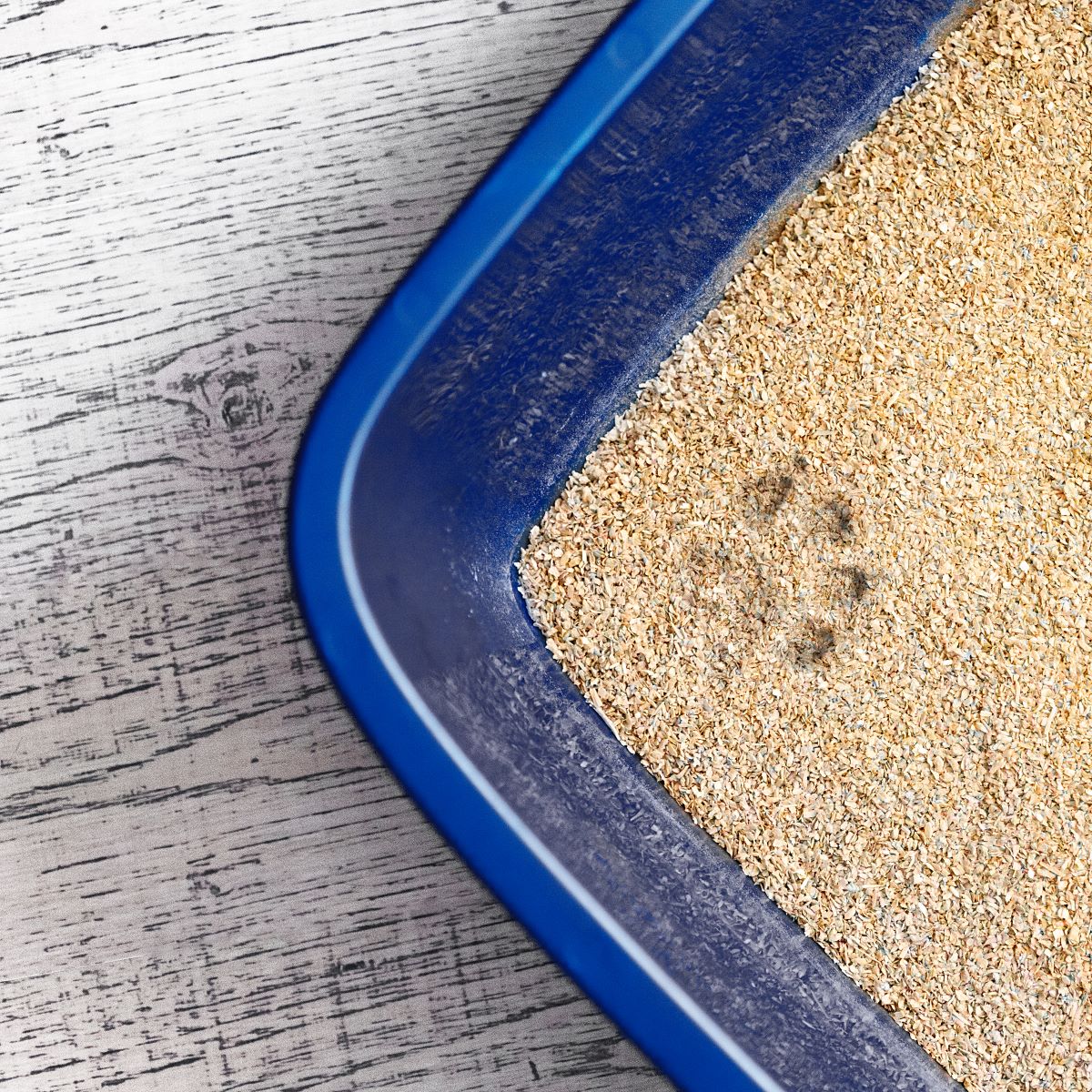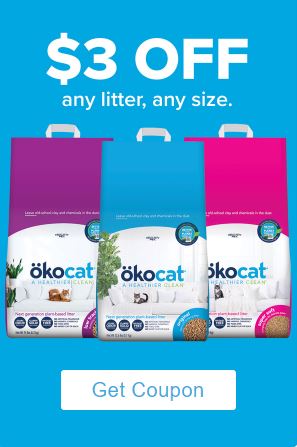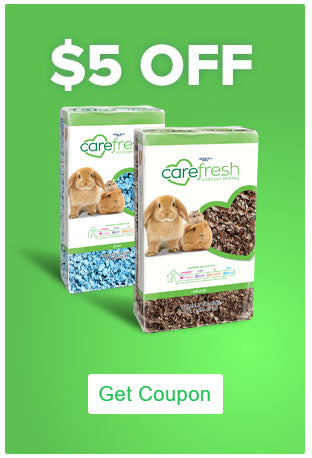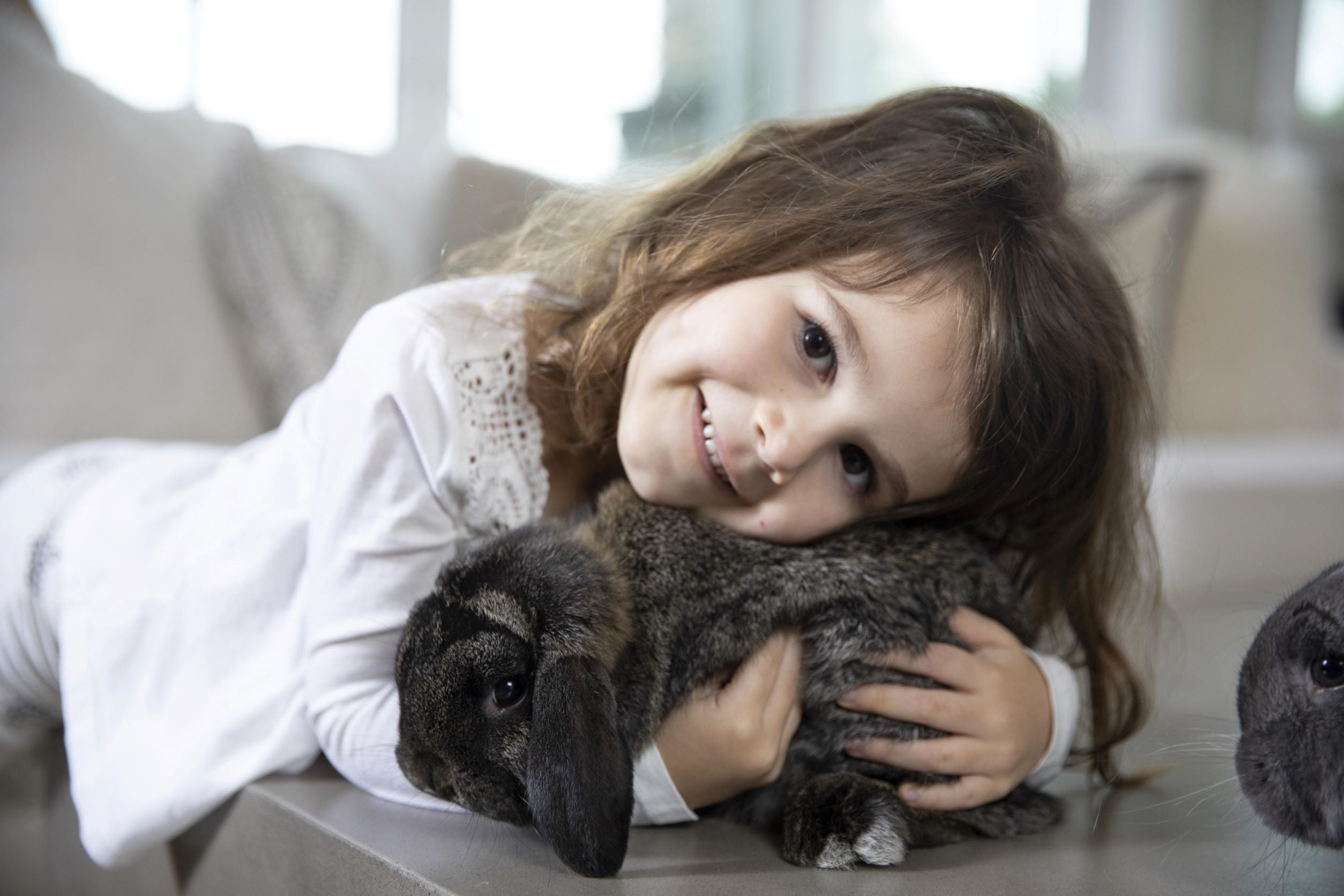7 Compelling Reasons to Choose Paper Packaging Over Heavy Plastic for Your Cat Litter
The battle between paper and plastic packaging is ongoing, but for eco-conscious consumers, paper often comes out on top. Here are seven compelling reasons why you should consider opting for paper packaging for your cat litter.
1. Environmentally Friendly:
- Paper is biodegradable and compostable, making it a sustainable choice.
- Plastic takes hundreds of years to decompose, contributing to environmental pollution.
2. Reduced Plastic Pollution:
- Choosing paper helps reduce the demand for single-use plastics.
- Plastic waste, especially in the oceans, poses a significant threat to marine life and ecosystems
3. Renewable Resource:
- Paper is made from trees, which can be replanted and harvested sustainably, and so is okocat natural litter!
- Plastic production relies on fossil fuels, a finite and environmentally damaging resource.
4. Energy Efficiency:
- The production of paper packaging consumes less energy compared to plastic.
- Lower energy consumption results in a smaller carbon footprint.
5. Recycling Ease:
- Paper is highly recyclable and widely accepted in recycling programs.
- Plastic recycling is more complex, and not all types are equally recyclable.
6. Versatility:
- Paper packaging can be adapted for various products, from food to cosmetics and more.
- Plastic packaging often faces limitations due to its non-biodegradable nature
7. Aesthetic Appeal:
- Paper packaging offers a natural, rustic, and eco-friendly appearance.
- Many consumers are drawn to the eco-conscious image conveyed by paper packaging.
In summary, choosing paper packaging over plastic is a small but impactful step toward a more sustainable future. It reduces plastic pollution, encourages the use of renewable resources, and supports energy-efficient production methods. Moreover, it's easy to recycle and offers versatility, making it a practical choice for a wide range of products such as natural cat litter. So, next time you're faced with a packaging choice, consider the positive impact of paper packaging on the environment and make the eco-friendly choice.
Read MoreNatural Wood Cat Litter vs Clay & Silica: What's the Difference and Why Make the Switch Today
These days there are SO many choices when it comes to cat litter. We've come a long way from only having a few non-clumping, inexpensive clay litters to choose from. Now there is everything from crystal litter that changes colors, to all kinds of clumping clay or wood litter and several different food-based litters like corn, wheat, tofu, tea, walnut....and the list goes on. Plus, the price range can vary greatly and can really add to the monthly pet budget. At the end of the day, it all comes down to using a litter that your cat likes, doesn't stink up the entire house, easy to scoop and clean, and also good for the environment.
Wondering how to decide? No one wants to waste time and money trying a bunch of different litters that don't work. Let's start by explaining the differences and why wood natural litter is the best choice for today's cat parents.
Wood works naturally without harmful chemicals or added perfumes or scents.
Have you ever seen how a piece of wood will swell up when water is allowed to stay on it? If you have ever had a toilet leak or other leak where a wood floor is, you have probably experienced this.
Wood fiber also naturally prevents enzymes from boding with liquid and waste to stop the creation of ammonia & odor. It is a nice, natural "wood" scent that is pleasant for you and your cat. Though wood litter is very effective at neutralizing the odors of urine and ammonia, it isn’t so great at managing the smell of feces. To keep your wood litter box smelling good, it’s best to scoop solids as soon as possible and dispose in a biodegradable bag.
Clay or silica also absorb liquid but usually have added chemicals and perfumes. Clay litters contain bentonites which can be very dusty and cause respiratory issues. Keep in mind, a cat’s sense of smell is about 14 times stronger than that of a human. Your cat not only breathes it in when using the litter box, but also may injest it when cleaning their paws and you have to breathe when filling or cleaning the box.
okocat wood litters are precisely made and cut to absorb liquid on contact, naturally, to form solid clumps for easy scooping and cleaning with very little airborne dust. A plant-based ingredient is added to make it clump.
Wood litter is made from sustainable materials and is 100% biodegradable.
Clay litter still accounts for more than five billion pounds of strip-mined clay annually. Strip mining, a type of surface mining, involves removing massive layers of soil and rock to expose the minerals underneath. Through this destructive process, wildlife habitats are ruined and nearby waterways are polluted. Because it’s not biodegradable, it clogs up landfills, a situation that causes much environmental concern.
As the janitor of your cat’s litter box, hygiene and odor control are key concerns. Natural wood and paper materials are very absorbent and rely on natural plant fibers to trap odors so they can't escape and evade the home.
Clumping Wood litter lasts longer so you spend less and clean less.
A high quality wood clumping cat litter with great odor control is imperative to making it last longer. The clumps allow for easy daily scooping to remove only the soiled litter and leave the rest. Good odor control helps to keep the space smelling fresh without needing to completely throw out all the litter and replace it with all new litter.
ökocat natural wood clumping litter works so well, you won't have to change the entire litter box every week, saving time and money. It really is a litter that lasts longer due to its superior all natural absorption capabilities and odor control. With regular scooping, the base litter can last up to 7 weeks! To make it last even longer, make sure you are using the right scoop so as not to waste any good litter.
Read MoreReduce Your Waste - How to Compost ökocat Natural Litter
Did you know that ökocat litter is 100% biodegradable and compostable? ökocat litter is an all-natural plant-based cat litter, which allows it to be returned from where it came—the earth!
Not only are we committed to making sustainable products, but we also strive to produce minimal waste and help you do the same! Did you know that roughly 80% of the items buried in landfills in the United States could be recycled or composted? Landfills are one of the largest contributors to soil pollution.
Traditionally when cleaning the litter box it is common to simply toss the old litter into the trash. However, composting has recently become a great way to reduce household waste. ökocat litter users who compost their old litter can sleep better at night knowing that they are creating a smaller carbon footprint for your furry friend.
How does it work?
Organic waste will break down naturally if given enough access to oxygen, allowing microorganisms to feed on the organic materials, breaking it down into usable compost! This is called aerobic decomposition, organic materials converted to compost can be used as a soil amendment, improving the quality of your soil by adding essential plant nutrients.
In landfills, waste lacks access to oxygen causing decomposition to take much longer and producing lots of greenhouse gasses like methane and takes up so much space!
How do I start a home compost?
If you are interested in starting a home composting system, do your research to find the right composting system for your home – there are tons of methods out there that will require different amounts of space and even work on your end. The basic principles of creating healthy compost are the same, it’s critical to practice good composting standards for optimal aerobic decomposition. This means stirring, turning, watering, checking the temperature, and covering your compost every few days.
Make sure there isn’t too much of one type of organic material in your compost pile, you want an overall balanced content. Variety is the spice of life, and that holds true to your compost pile as well! It does take some effort but it’s well worth it in the end and after a few months, your compost will be ready to be used in your happy and healthy garden.
If you have any questions or concerns regarding composting at home, we recommend checking your local ag regulations, reading more through the tips at EPA.gov, or checking your state regulations.
Can I compost poo? It depends.
Many of the compost blends you can buy on the market will contain manure from animals like cows and horses. These animals are herbivores, meaning their waste will only contain plant matter and this creates amazing compost!
So the rules of thumb for composting your pet’s waste is: herbivores only! That, unfortunately, means no for composting your cat's poo.
Cat parents can still compost their excess litter but should remove the solid waste from the used litter and properly dispose of with the use of a biodegradable bag. The feces of any carnivorous animal may contain harmful bacteria and should NOT come in contact with anything edible. After removing any solid waste, you can safely compost the rest of the litter.
Composting How-to:
Place litter on your compost heap, add some straw and mix it all together.
Allow this to sit with other compostable items, turning the compost as needed to allow for proper aerobic decomposition.
Each composting system has different requirements for turning and tending, so make sure to tailor these steps to your specific system.
Depending on the size of your pile and your method of composting, it can take anywhere from two to six months for your compost to be ready to use and mixed into your garden.
Important Tips for Success:
Do not compost the waste of any animals who are ill, contagious, or taking medication, as these unwanted elements may wind up in your soil.
Do not compost the feces of carnivores or omnivores
Keep your compost pile balanced
Don’t want to Start your Own Composting System?
What if I don’t want to start a home compost, but don’t want to throw my excess litter into the garbage?
If you are not interested in creating your own home compost bin or don’t have the available space, you may be able to use a yard waste bin or simply bring your compostable materials to local farms or a nearby community garden. Be sure to ask first if they will accept compostable materials with pet waste and what the requirements are.
Most waste management companies have a commercial composting facility, especially if you live in a larger town or city.
If you are struggling to locate one, we simply recommend googling “composting facilities near me”, give them a call and ask:
If they provide a waste-management bin and the times they pick up compost
If they do not pick up, when and how your compostable materials can be dropped off
Any regulations of what should/should not be included in your compost materials
The cost associated with working the yard-waste management
Any additional benefits they provide (such as finished compost at a reduced price).
So what are you waiting for? Start composting your used ökocat litter today!
Read MoreReduce Your Waste - How to Compost carefresh Small Pet Paper Bedding
Did you know that carefresh bedding is 100% biodegradable and compostable? carefresh is a made from scratch small pet paper bedding, which allows it to be returned from where it came—the earth!
Not only are we committed to making sustainable products, but we also strive to produce minimal waste and help you do the same! Did you know that roughly 80% of the items buried in landfills in the United States could be recycled or composted? Landfills are one of the largest contributors to soil pollution.
In the past when cleaning out a small pet’s home, it has been common to simply toss the old bedding into the trash. However, composting has recently become a great way to reduce household waste. Small pet parents who compost their old bedding can sleep better at night knowing that they are creating a smaller carbon footprint for your furry friend.
How does it work?
Organic waste will break down naturally if given enough access to oxygen, allowing microorganisms to feed on the organic materials, breaking it down into usable compost! This is called aerobic decomposition, organic materials converted to compost can be used as a soil amendment, improving the quality of your soil by adding essential plant nutrients.
In landfills, waste lacks access to oxygen causing decomposition to take much longer and producing lots of greenhouse gasses like methane and takes up so much space!
How do I start a home compost?
If you are interested in starting a home composting system, do your research to find the right composting system for your home – there are tons of methods out there that will require different amounts of space and even work on your end. The basic principles of creating healthy compost are the same, it’s critical to practice good composting standards for optimal aerobic decomposition. This means stirring, turning, watering, checking the temperature, and covering your compost every few days.
Make sure there isn’t too much of one type of organic material in your compost pile, you want an overall balanced content. Variety is the spice of life, and that holds true to your compost pile as well! It does take some effort but it’s well worth it in the end and after a few months, your compost will be ready to be used in your happy and healthy garden.
If you have any questions or concerns regarding composting at home, we recommend checking your local ag regulations, reading more through the tips at EPA.gov, or checking your state regulations.
Can I compost poo? It depends.
Many of the compost blends you can buy on the market will contain manure from animals like cows and horses. These animals are herbivores, meaning their waste will only contain plant matter and this creates amazing compost!
So the rules of thumb for composting your pet’s waste is: herbivores only! Rabbit, guinea pig, or chinchilla feces are a great addition to your compost piles.
Parents of omnivore or carnivore pets can still compost their excess carefresh bedding, but we recommend removing the solid waste from the used litter and properly disposing with the use of a biodegradable bag. The feces of any omnivorous or carnivorous animals may contain harmful bacteria and should NOT come in contact with anything edible. After removing any solid waste, you can safely compost the rest of the litter.
Composting How-to:
Place the droppings and used bedding on your compost heap, add some straw and mix it all together.
Allow this to sit with other compostable items, turning the compost as needed to allow for proper aerobic decomposition.
Each composting system has different requirements for turning and tending, so make sure to tailor these steps to your specific system.
Depending on the size of your pile and your method of composting, it can take anywhere from two to six months for your compost to be ready to use and mixed into your garden.
Important Tips for Success:
Do not compost the waste of any animals who are ill, contagious, or taking medication, as these unwanted elements may wind up in your soil.
Do not compost the feces of carnivores or omnivores
Keep your compost pile balanced
Don’t want to Start your Own Composting System?
What if I don’t want to start a home compost, but don’t want to throw my excess bedding into the garbage?
If you are not interested in creating your own home compost bin or don’t have the available space, you may be able to use a yard waste bin or simply bring your compostable materials to local farms or a nearby community garden. Be sure to ask first if they will accept compostable materials with pet waste and what the requirements are.
Most waste management companies have a commercial composting facility, especially if you live in a larger town or city.
If you are struggling to locate one, we simply recommend googling “composting facilities near me”, give them a call and ask:
If they provide a waste-management bin and the times they pick up compost
If they do not pick up, when and how your compostable materials can be dropped off
Any regulations of what should/should not be included in your compost materials
The cost associated with working the yard-waste management
Any additional benefits they provide (such as finished compost at a reduced price).
So what are you waiting for? Start composting your used carefresh bedding today!
Read MoreBest Tips for Adopting a Pet Guinea Pig
Guinea Pigs are super sweet and social and can be fun, wonderful pets to add to your family. They generally enjoy people and other guinea pigs but are also independent and easy going, while also being curious and inquisitive. They are very social so they should have a companion guinea pig at all times. Here are a few tips to think about before deciding to bring a guinea pig home:
What to consider:
Guinea Pigs can live between 4 and 8 years, some even older. This is a longer life expectancy than other small pets such as gerbils or hamsters that only live 1-2 years, so be sure you are committed to care for them that long.
They need a companion so be prepared to adopt at least two. It is best to adopt the same gender only, however some males will fight.
Do you have enough space to provide a large habitat for them?
Please adopt responsibly. There are usually plenty of guinea pigs available at your local humane society or an animal rescue.
Make sure they are spayed so they cannot reproduce and have them checked by a Vet for any healthy issues if possible.
Guinea Pig Diet:
Fresh water must be provided at all times. Use a water bottle or a water dish that does not tip over easily. Two sources is best.
Guinea pigs are herbivores meaning they only eat plant material. Fresh greens and vegetables are an essential part of a guinea pigs diet, especially as a source of Vitamin C, which they cannot make on their own.
Fruit can be given but in moderation, no more than once or twice a week
Hay MUST be available at all times. Grass hay, preferably Timothy Hay, provides the fiber guinea pigs need for digestion and helps grind their constantly growing teeth. They should be eating a pile of hay that is about twice the size of their body each day.
A pellet based food especially formulated for guinea pigs should be given every day. Make sure it does not have "fillers" like nuts, seeds, etc.
Vitamin C is very important for their overall health. Guinea pigs are unable to make or store their own vitamin C so the best way to make sure they receive their daily vitamins is with a delicious offering of vitamin-rich vegetables. Red and green peppers, rosehips, parsley, kale and other dark leafy greens are all excellent sources of vitamin C. Read more
Treats can be given in moderation, just make sure they do not have added sugar or fattening ingredients like nuts and seeds. NO chocolate, it poisonous for guinea pigs.
Their Habitat Needs:
Make sure their home is large enough to move around and get enough exercise, with appropriate hidey spots and enrichment like chewy toys.
We like the Midwest habitats (pictured below) that are both expandable and easy to clean. Total size depends on number of guinea pigs kept together but should be at least 10.5 sq ft for two.
Place the habitat in an area that is free of drafts and stays between 65 and 75 degrees Fahrenheit.
Keep in mind that guinea pigs can be most active at night so be sure to place in an area where they won't disturb your sleep.
Use a super absorbent bedding like carefresh for the bottom as guinea pigs like to poop and pee a lot! Spot cleaning every day is best, with a total refresh once a week.
Guinea pigs should also have access to additional space or play yard a few times a day for exercise. A pet playpen works great for this.
Other Supplies:
Your guinea pig will need some fun things to do to keep them entertained safely.
There are lots of safe toys at pet supply stores. Always ensure they are meant for guinea pigs and don’t contain any toxic ingredients or hazardous materials that could be dangerous for the pig to chew on or ingest.
Guinea Pig’s teeth grow constantly. They need to chew a lot to keep their teeth in proper condition. If their teeth grow too long or crooked, it can impact their health and their ability to properly ingest food.
Safe guinea pig chewable toys include wood, apple sticks and some fibers. Be sure to only give your guinea pig items that are safe. Sticking with items from pet supply stores is the best way to ensure your pig’s safety.
Here is a basic list of supplies that you will need to get and setup before bringing your new pet guinea pig home.
Large Habitat & play yard – safe and secure and big enough for them to move around and get exercise
Water Bottle or bowl – most guinea pigs will drink out of a water bottle with spout. Two sources.
Hay feeder – Some guinea pigs enjoy pulling the hay out of the hay feeder and it can help to keep the hay sanitary. Some guinea pigs will pull all the hay out and it will just end up on the floor of the enclosure.
Heavy Food Bowl – Check that it is shallow enough for your guinea pig to dip their face into
Hay & pellet food, greens, vegetables, source of Vitamin C
Enrichment/Chew Toys – apple sticks, woven fiber, wooden chew toys are all great options
Igloo or Hidey Hut – Make sure it is big enough for your pig to turn around in. If you are adopting a young pig, they may grow, and you may end up needing a bigger hidey hut.
Grooming – Small guinea pig nail trimmers, brush
*Note – if you are adopting a long-haired guinea pig, consult your veterinarian regarding grooming needs as some long-haired varieties need regular bathing, brushing and grooming to stay healthy.
Bedding:
carefresh natural paper bedding is a great option and is safe, absorbent and easy to clean with little dust for them to breathe in. Plus there are lots of fun colors to choose from for a fun habitat theme.
Since guinea pigs are herbivores, their bedding along with their poop is compostable! Learn how >>> Composting Tips
Do not use wood shavings of any kind as these can emit odors and dust that can be harmful for your guinea pig’s respiratory system.
Socializing
Some guinea pigs enjoy being cuddled or snuggled. Others prefer to be left alone. Since they are prey animals, they naturally try to avoid being picked up. Getting down on the floor with them with regular quiet contact and slow approaches with patting and gentle picking up over time will get them used to their owner and help them realize that they are safe. Still, some piggies will prefer to be left alone and that is ok. Learn more
They may all sorts of fun and silly noises. Sometimes to communicate that they are hungry or excited to get a treat. Sometimes they chutter or make a clicking noise when they are unhappy or stressed.
Read MoreFilter - Key Words








 email us
email us